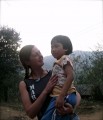One of the main reasons for my planned escape to Alaska’s wilderness was to experience a polar opposite. After spending months in tropical forests of Central and South America, I thought the Last Frontier’s distinct environment would perhaps trigger unique thoughts and experiences. After yesterday’s wilderness trek feelings from Brazil felt ripe as ever.
Mendenhall Glacier, Juneau:
My two roommates and I set out on a long afternoon hike to Juneau’s own Mendenhall Glacier. We’d heard rumors of glacial caves where one could slither into open, blue pits beneath mounds of ice crystal. The three of us enjoyed four miles of maintained trails, in which every inch of ground was inhabited by lichen and each green pine covered by moss. Waterfalls and creeks were plenty, making this supposed tundra feel like humid rainforest. I didn’t realize until arrival that Southeastern Alaska is part of the Tongass National Forest, America’s largest temperate rainforest region. This explains the similarity in moist canopy to Brazil, although one tropical forest and one temperate.
After a flat walk along trail where I studied muddy patches for bear prints, smooth became steep incline where railing was available for support. The trail allowed peaks of Mendenhall Lake, in which icebergs and silt are emptied daily by the massive chunk of receding glacial ice. After hauling ourselves up steep rock cliff-side using a secure rope, the seemingly endless glacier popped into view. First some rugged trees, fast flowing stream, and rocky avalanche zone were trudged before we could finally step onto the sheet of ice. Views were stunning, and quite different from any landscapes I’d witnessed before. Jagged ice peaks severed the sky and beneath melting ice water rained, forming intricate neon-blue crevices. The formations seemed too perfect to be fashioned accidently by just warmth; transformation of state from solid to liquid. We continued down the rocky slope, losing our balance on loose tumbling rock. Gleaming granite slabs and shimmering metallic rocks were piled where glacier had previously slid. This was exactly the kind of environment I wanted to experience in Alaska.
After many awes and photos taken, we turned around for return. I led the way up large boulders and a small waterfall.  Trail was no longer marked, yet the idea that dense, treacherous canopy lay ahead didn’t even cross our minds. We bouldered and spotted two scurrying porcupines, before realizing that we had no idea where we were and where the trail lay. We walked and joked along the way, sure trail and safety was not far ahead. We found ourselves on a nearly vertical decline, where we slid down the muddy slope hanging onto roots and branches. After about an hour and forest continued to thicken and steepen, we realized that we may be way off track, and how easy it is to get in this situation in the wilderness. I’m fittingly reading Into the Wild, tracing Alexander Supertramp’s Alaskan adventure, and his story lingered on my mind as we got deeper into canopy, farther and farther from any possible trail.
Atlantic Rainforest, Brazil:
About one year ago I found myself in a similar state in Brazil’s Atlantic Rainforest. This tropical rainforest covers only 10% of its original land, the rest burned and slashed some time ago for farming. I was interning for a nonprofit dedicated towards environmental conservation and reforestation, and spent my free time exploring secondary growth forest. One day, similarly with two others, we started on trail only to become completely surrounded by trees without much sense of direction, but rather a great deal of confusion. I remember when the sun started to disappear that day, and how I began to accept the idea of sleeping on the forest floor without proper equipment, cold and uncomfortable.
Looking “Into the Wild”:
Alaska and Brazil certainly have drastically different environments, yet getting lost in each seemed nearly the same. In both experiences I was accompanied by other adventurers, whom I did not yet know well but grew to respect greatly. Both times I was surrounded by green in every direction, not sure which way would lead to escape. Both led to continuous wondering, nervousness, but also an adrenaline-rush difficult to imitate in other situations. Both made me feel sealed by wilderness, dumfounded and overtaken, yet not so separate from my surroundings as a human being, rather part of the mundane environment encompassing me.
Both in Brazil last year and Alaska yesterday, the anxious feelings were short-lived, compared to those described in stories like Into the Wild. In this book, the lost author writes, “Time after time I’d think I’d found a way out, only to wind up in a deep-blue cul-de-sac or stranded atop a detached pillar of ice,†adequately explaining the way I felt searching for path. Although the hardiest adventurers are lost for months, and in my situation it was only hours, connections were still drawn between Jon Krakauer’s descriptions, and my being surrounded in the forests of Alaska and Brazil.
To many people there is extreme lure by the wild, drawing individuals in so far that they may not return. While I myself don’t think I could disappear completely like these characters, I still question some of the choices I’ve made when in pretty deep. One time I was alone in the forest of Costa Rica and found a bright pink and possibly poisonous tarantula on my arm, which led to a minor scare. Again quoted by Into the Wild, Krakauer describes, “Wilderness appealed to those bored or disgusted with man and his works. It not only offered an escape from society but also was an ideal stage for the Romantic individual to exercise the cult that he frequently made of his own soul. The solitude and total freedom of the wilderness created a perfect setting…â€Â Another grand description of my own meandering mind.
Three of us lost in Brazilian canopy, or three slipping down the slope of Juneau’s Mount McGuiness, both emanated similar distraught feelings, in addition to excitement and attraction. These sentiments are described in greater detail by those with grander experience whom have spent months on end contained by wilderness. Brazil, Alaska, Alexander Supertramp, and I united by experience, hardly distinct as map and time tell.

